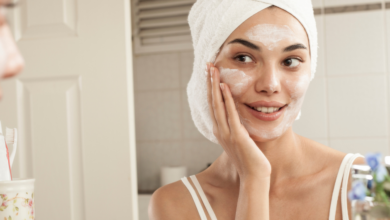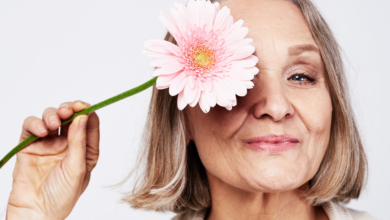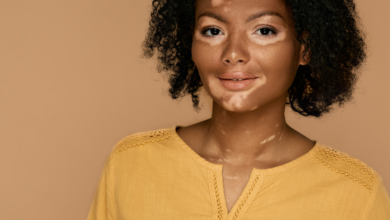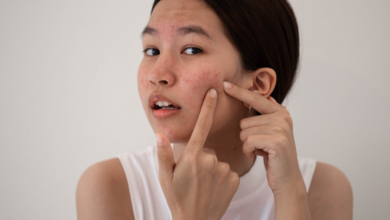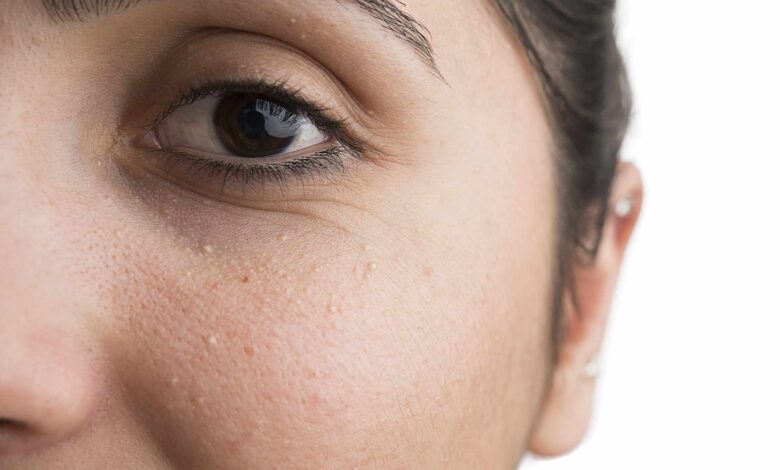
Milia, the small white bumps that often appear on the skin, can be frustrating and stubborn to deal with. In this article, you will gain a comprehensive understanding of milia and learn effective strategies to tackle these pesky bumps. From exploring the causes of milia to discovering preventative measures, this article aims to equip you with the knowledge and tools necessary to address milia effectively. Say goodbye to these stubborn white bumps as we delve into the world of milia and uncover ways to combat them.
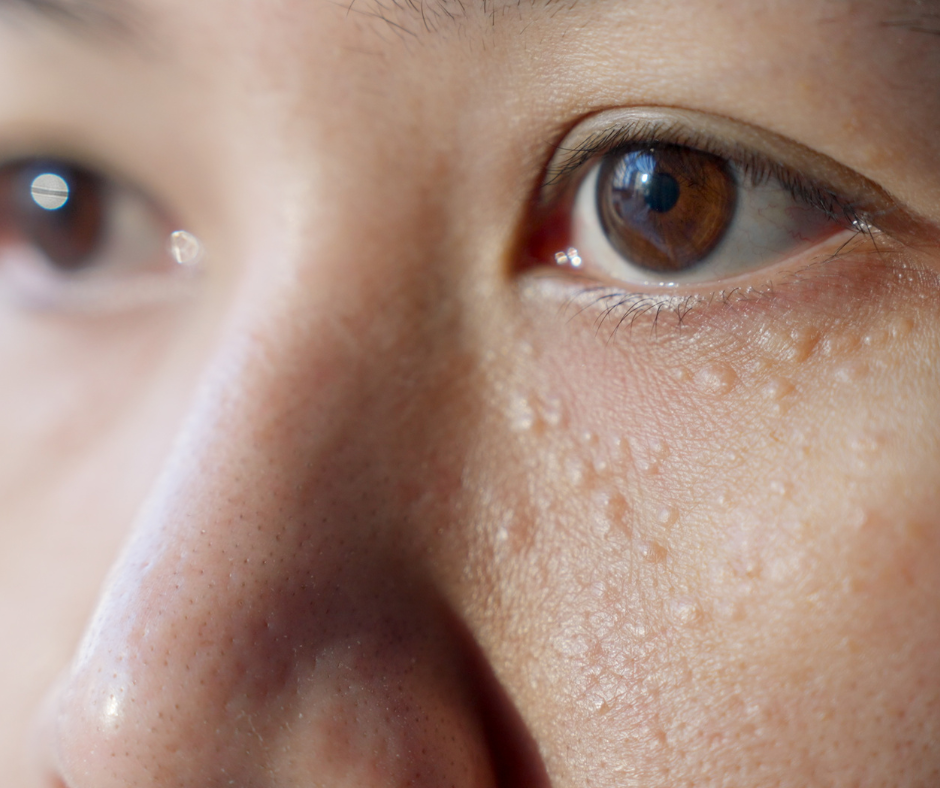
What is Milia?
Milia, also known as milk spots, are small, white or yellowish bumps that appear on the skin, particularly on the face and around the eyes. They are harmless and painless, but their persistence can be frustrating for those who have them. Milia are commonly mistaken for whiteheads or small pimples, but they are actually different. Unlike acne, milia are not caused by oil or bacteria but rather by dead skin cells that become trapped beneath the surface of the skin.
Causes of Milia
There are several factors that can contribute to the formation of milia. One of the most common causes is the skin’s inability to exfoliate properly. When dead skin cells are not shed effectively, they can build up and become trapped, leading to the formation of milia. Other potential causes include using heavy or occlusive skincare products that clog the pores, damage to the skin from sunburns or injuries, and certain medications or medical conditions that affect the skin’s natural exfoliation process.
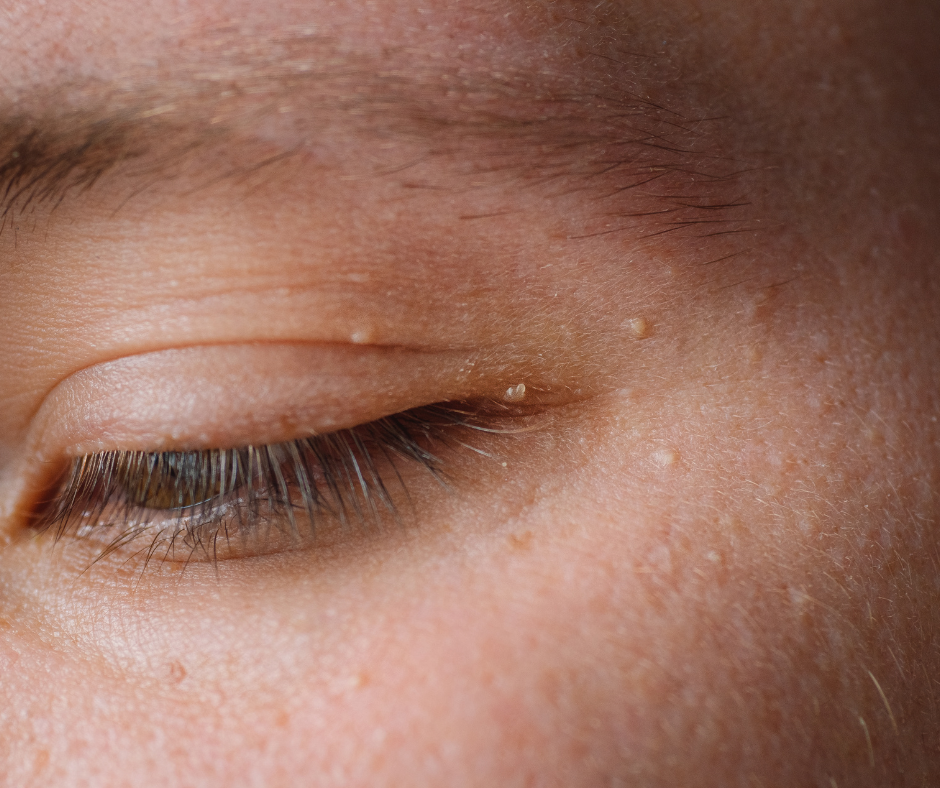
Types of Milia
Milia can be categorized into different types based on their appearance and the age at which they occur. The main types of milia are:
- Primary Milia: These appear in individuals of all ages and are the most common type. Primary milia develop spontaneously on the skin without any apparent cause.
- Neonatal Milia: This type of milia occurs in newborn babies and is characterized by small white bumps on their faces. Neonatal milia usually disappear on their own within a few weeks or months, without requiring any treatment.
- Traumatic Milia: These milia are caused by damage to the skin, such as burns, blisters, or injuries, and can appear as a result of healing in the affected area.
- Secondary Milia: Secondary milia develop as a result of certain medical conditions, such as blistering disorders, genetic disorders, or drug reactions. They can also occur after certain cosmetic procedures, like laser treatments or dermabrasion.
Factors Contributing to Milia Formation
Several factors can contribute to the formation of milia. These include:
- Inadequate exfoliation: When dead skin cells are not effectively removed, they can build up and clog the pores, leading to milia formation.
- Heavy or occlusive skincare products: Using products that are too heavy or occlusive can prevent the skin from breathing properly and hinder the natural shedding of dead skin cells.
- Sun damage: Excessive sun exposure can damage the skin and interfere with its ability to exfoliate properly, increasing the risk of milia formation.
- Skin injuries: Burns, blisters, or other forms of skin damage can disrupt the skin’s normal exfoliation process and lead to the development of milia.
- Certain medications or medical conditions: Some medications or medical conditions can interfere with the skin’s natural exfoliation process and contribute to milia formation.
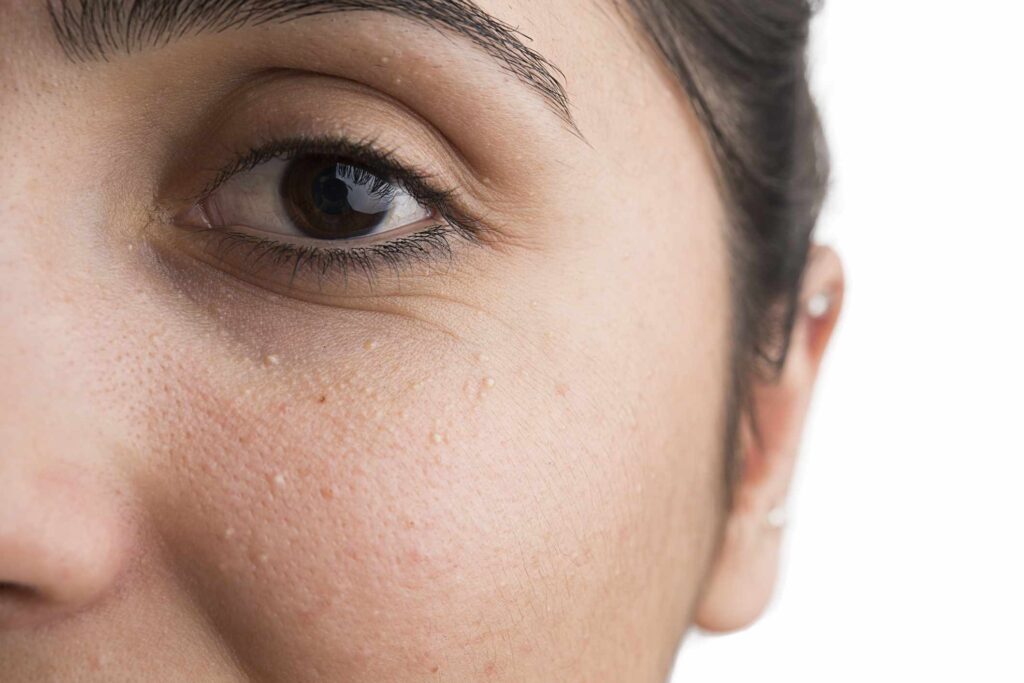
Identifying Milia
Identifying milia is relatively straightforward, as they have distinct characteristics. Milia are small, raised bumps that are usually white or yellowish in color. They are typically round or dome-shaped and have a smooth texture. Milia are most commonly found on the face, particularly around the eyes, cheeks, and forehead, but they can also occur on other parts of the body. Unlike acne or pimples, milia do not have an opening or pore on the surface of the skin.
If you suspect that you have milia, it’s always advisable to consult with a dermatologist or skincare professional to ensure an accurate diagnosis.
Prevention of Milia
While it may not be possible to prevent milia entirely, there are steps you can take to minimize their occurrence. Here are some preventive measures you can incorporate into your skincare routine:
- Gentle exfoliation: Regular exfoliation helps remove dead skin cells and promotes healthy skin turnover. Use a gentle exfoliating cleanser or a mild chemical exfoliant to keep the skin’s surface clear and prevent the buildup of dead skin cells.
- Avoid heavy or occlusive products: Opt for lightweight, non-comedogenic skincare products that won’t clog your pores. Look for products labeled as “oil-free” or “non-comedogenic” to minimize the risk of milia formation.
- Protect yourself from the sun: Sun damage can disrupt the skin’s natural exfoliation process, so it’s crucial to protect your skin from harmful UV rays. Wear sunscreen with a high SPF, seek shade during peak sun hours, and wear protective clothing and accessories, such as hats and sunglasses.
- Be cautious with cosmetic procedures: If you undergo cosmetic procedures like laser treatments or dermabrasion, be aware that complications such as milia formation can occur. Discuss potential risks with your dermatologist or skincare professional and ensure they have experience in performing the procedure safely.
Natural Remedies for Milia
If you prefer natural remedies or want to complement professional treatments, there are some natural ingredients that may help with milia. However, it’s worth noting that natural remedies may not work for everyone, and individual results may vary. Here are some natural remedies that are commonly suggested for milia:
- Honey: Apply a small amount of raw honey directly on the milia and leave it on for about 15 minutes before rinsing off. Honey has natural antibacterial properties and can help moisturize the skin.
- Tea tree oil: Dilute tea tree oil with a carrier oil, such as coconut oil, and apply a small amount on the milia using a cotton swab. Tea tree oil has antimicrobial properties that may help prevent infection and promote healing.
- Apple cider vinegar: Mix equal parts apple cider vinegar and water, and apply the solution to the milia using a cotton ball. Let it sit for a few minutes before rinsing off. Apple cider vinegar has exfoliating properties that may encourage the shedding of dead skin cells.
- Aloe vera: Extract the gel from an aloe vera leaf and apply it directly on the milia. Leave it on for about 15 minutes before rinsing off. Aloe vera has soothing properties and can help moisturize the skin.
It’s important to remember that these natural remedies have not been extensively studied for their effectiveness in treating milia. If you don’t see any improvement or if your milia worsen, it’s advisable to seek professional help.
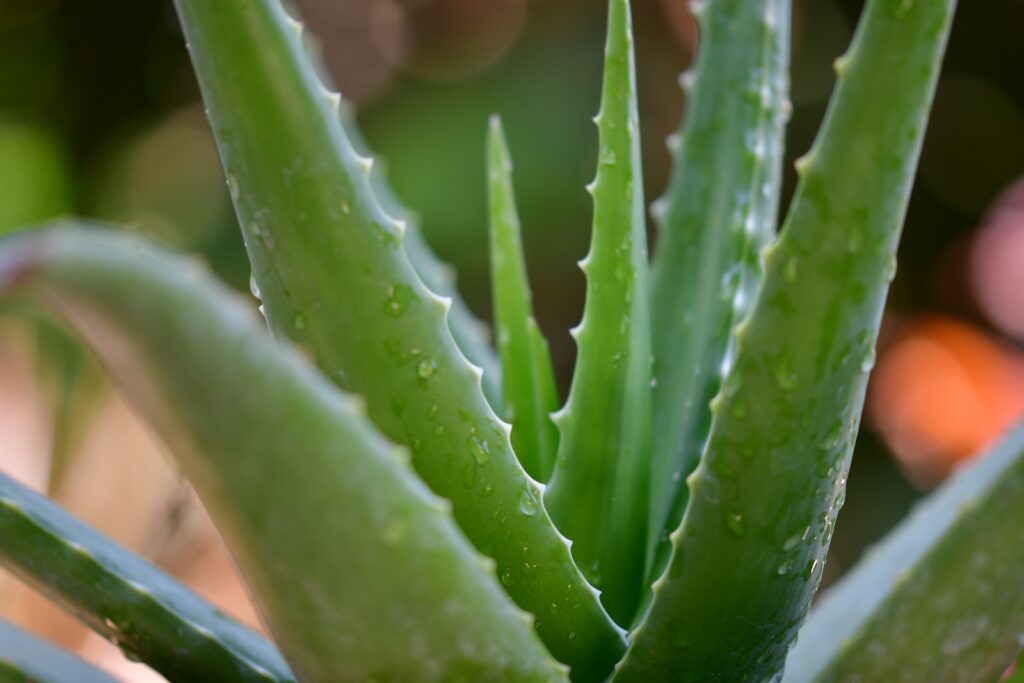
At-Home Treatment Options
While some milia may resolve on their own without treatment, there are some at-home treatment options that you can consider if you’re looking to speed up the process or minimize their appearance. These treatments should be approached with caution and are most effective when done under the guidance of a dermatologist or skincare professional. Here are a few common at-home treatment options for milia:
- Gentle exfoliation: Use a mild physical or chemical exfoliant to help remove dead skin cells and promote the shedding of milia. Be gentle when exfoliating and avoid using abrasive scrubs that can irritate the skin.
- Topical retinoids: Over-the-counter retinoid creams or gels that contain vitamin A can help speed up the skin’s natural exfoliation process and promote the shedding of milia. However, it’s important to follow the instructions and use these products sparingly to avoid skin irritation.
- Extraction: If you’re comfortable with the idea of extracting milia at home, you can use a sterile needle or extraction tool to carefully puncture the bump and remove the trapped keratin. However, improper extraction techniques can lead to scarring or infection, so it’s crucial to be cautious and sterile.
It’s worth noting that attempting at-home treatments for milia may not be suitable for everyone. If you’re unsure or concerned about treating your milia at home, it’s best to consult with a dermatologist or skincare professional.

Professional Treatment for Milia
For stubborn or persistent milia, seeking professional treatment may be necessary. A dermatologist or skincare professional can recommend the most suitable treatment options based on your specific condition and needs. Here are some professional treatment options commonly used for milia:
- Extraction: A professional can safely extract milia using sterile instruments, avoiding the risk of scarring or infection. Dermatologists use a specialized extraction technique to carefully puncture the milia and remove the trapped keratin.
- Chemical peels: Chemical peels involve applying a solution to the skin that causes a controlled exfoliation and shedding of dead skin cells. This can help improve the appearance of milia and promote skin renewal.
- Microdermabrasion: This non-invasive procedure uses a machine to exfoliate the skin and remove the outermost layer, which can help smooth the skin’s texture and minimize the appearance of milia.
- Cryotherapy: In certain cases, dermatologists may use cryotherapy to freeze the milia, causing them to dry up and eventually fall off. This treatment is typically reserved for larger milia or those that are not easily extracted.
The choice of treatment will depend on factors such as the size and location of the milia, the patient’s skin type, and any underlying medical conditions. It’s important to consult with a dermatologist or skincare professional to determine the most appropriate treatment plan for your specific case.
Tips for Managing Milia
In addition to the preventive measures and treatments mentioned earlier, here are some tips for managing milia:
- Avoid squeezing or picking at milia: Trying to squeeze or pick at milia can lead to scarring or infection. It’s best to leave them alone and let them resolve naturally or be treated by a professional.
- Follow a consistent skincare routine: Establish a skincare routine that includes gentle cleansing, moisturizing, and exfoliating to help maintain healthy skin and prevent the buildup of dead skin cells.
- Patience is key: Milia can take time to resolve, especially if they are deep-seated or numerous. Be patient and consistent with your skincare routine and treatment plan, and consult with a professional if you’re not seeing any improvement.
- Protect your skin from the sun: Sun exposure can damage the skin and hinder its natural exfoliation process. Apply sunscreen daily, seek shade, and wear protective clothing to minimize the risk of milia formation and protect existing milia from further damage.
Remember, everyone’s skin is unique, and what works for one person may not work for another. It’s important to tailor your skincare routine and treatment plan to your specific needs and consult with a dermatologist or skincare professional for personalized advice and guidance.

